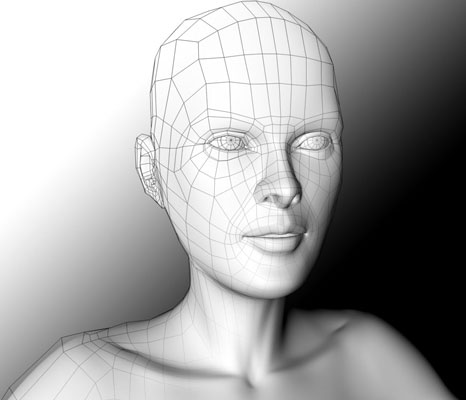- Polygonal modeling
- Curve modeling
- Digital sculpting
Due to the accuracy and artistry digital sculpting provides, the 3D modelers used are often installed on tablets using highly accurate styli. Check out the 3D fantasy fish in this figure for a typical example of a 3D model. It was modeled using organic surfaces.
 Credit: Jahurtado/CC BY-SA 4.0.
Credit: Jahurtado/CC BY-SA 4.0.A 3D fantasy fish composed of organic surfaces generated using LAI4D.
Polygonal modeling
The points used to create a 3D model are called vertices and are connected by line segments to form a polygon mesh. (Imagine a 3D spider web, where it forms a 3D shape, and each line from each interconnecting point forms a 3D edge, and each of these edges forms the 3D model.)Many 3D models created are developed as textured polygonal models because they’re flexible and can be rendered extremely quickly.
The downside, however, is that polygons are planar and can only approximate curved surfaces using many polygons.
The following figure gives you a good idea of how polygonal modeling breaks down an object — in this case, a human head — into polygons to allow it to be modeled and rendered quickly.
 Credit: CC BY-SA 3.0.
Credit: CC BY-SA 3.0.Polygonal modeling.
Curve modeling
Using curve modeling, the 3D surfaces are defined by curves, influenced by weighted control points, which pull the curves in the appropriate direction.The curve then follows the points (but sometimes will not interpolate them). If the weighting for a point is increased, it will pull the curve closer to that point.
Curve types include Non-Uniform Rational B-Spline (NURBS), splines, patches, and geometric primitives. While they all sound complicated, the 3D modeler, such as Tinkercad, will do all the math.
Digital sculpting
Digital sculpting is a new modeling method, which has become popular on current tablet devices that use the highly accurate styli now available.There are currently three types of digital sculpting:
- Displacement is the most widely used among applications at this moment. Displacement uses a dense mesh model and stores locations for the vertex positions through use of a 32-bit image map.
- Volumetric is loosely based on voxels (an array of elements of volume that form a notional three-dimensional space) and has similar capabilities as displacement. However, it doesn’t suffer from polygon stretching when a region doesn’t have enough polygons to achieve a deformation.
- Dynamic tessellation is similar to voxels but divides the surface using triangulation to maintain a smooth surface and allow finer detail.





